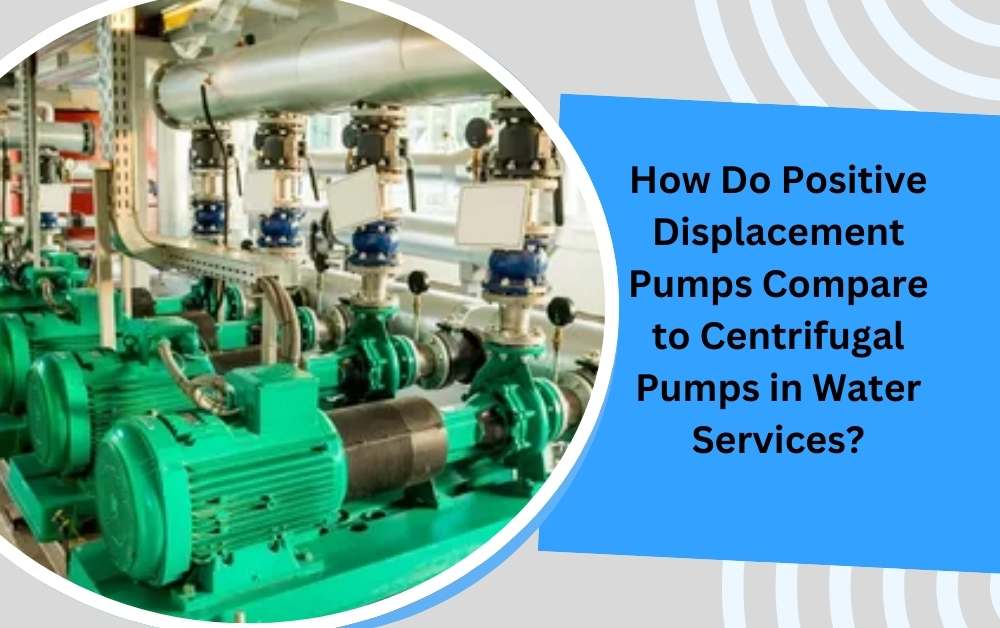When it comes to water services, choosing the right pump is crucial for ensuring efficiency, reliability, and cost-effectiveness. Two common types of pumps used in water services are positive displacement pumps and centrifugal pumps. Each has its own unique features, advantages, and applications. This blog will compare these two types of pumps, focusing on their working principles, benefits, and suitability for different water service applications.
Understanding Positive Displacement Pumps
Positive displacement pumps are designed to move a fixed amount of water with each cycle. They work by trapping a specific volume of fluid and then displacing it, creating a steady and consistent flow.
Note: Ready to optimize your water services with reliable and efficient positive displacement pumps? Choose Forte Oil Field Services for top-quality solutions tailored to your needs. Contact us today to learn more about our positive displacement pumps for water services and how they can enhance your operations.
How Positive Displacement Pumps Work
Positive displacement pumps operate by trapping water in a chamber and then forcing it out using a mechanical motion. This can be achieved through various mechanisms, including:
- Reciprocating Pumps: Use a piston or diaphragm to move water.
- Rotary Pumps: Use gears, lobes, or screws to move water.
- Peristaltic Pumps: Use a rotating roller to compress a tube, pushing water through it.
Key Benefits of Positive Displacement Pumps
- Consistent Flow: Provide a steady and consistent flow regardless of the pressure.
- High Efficiency: Efficient at handling viscous fluids and maintaining flow rates.
- Self-Priming: Can handle air and gas in the liquid without losing prime.
- Versatile: Suitable for a wide range of applications, including high-pressure and low-flow situations.
Understanding Centrifugal Pumps
Centrifugal pumps are the most common type of pump used in water services. They use the principle of centrifugal force to move water, converting rotational energy into kinetic energy to generate flow.
How Centrifugal Pumps Work
Centrifugal pumps operate by spinning an impeller inside a casing. As the impeller rotates, it creates a vacuum that draws water into the pump. The water is then expelled outward through the impeller’s vanes, increasing its velocity and pressure.
Key Benefits of Centrifugal Pumps
- Simple Design: Have a straightforward design with fewer moving parts, making them easy to maintain.
- High Flow Rates: Capable of handling large volumes of water efficiently.
- Cost-Effective: Generally more affordable and cost-effective for large-scale water movement.
- Versatile: Suitable for a wide range of applications, including low-pressure and high-flow situations.
Comparing Positive Displacement Pumps and Centrifugal Pumps
Now that we have a basic understanding of how these two types of pumps work, let’s compare them based on various factors that are important in water services.
Flow Rate and Pressure
Positive Displacement Pumps
Positive displacement pumps are known for providing a constant flow rate regardless of changes in pressure. This makes them ideal for applications where maintaining a steady flow is critical, such as dosing and metering.
Centrifugal Pumps
Centrifugal pumps, on the other hand, have a flow rate that varies with changes in pressure. They are well-suited for applications where high flow rates are needed, but the pressure can fluctuate, such as in water supply and irrigation systems.
Efficiency
Positive Displacement Pumps
Positive displacement pumps are highly efficient in handling viscous fluids and maintaining consistent flow rates. They are less affected by changes in viscosity and can operate effectively at higher pressures.
Centrifugal Pumps
Centrifugal pumps are efficient in handling large volumes of water with lower viscosity. Their efficiency decreases as the viscosity of the fluid increases, making them less suitable for thicker liquids.

Maintenance and Durability
Positive Displacement Pumps
Positive displacement pumps have more moving parts and complex mechanisms, which can make maintenance more challenging. However, they are generally robust and durable, capable of handling tough conditions.
Centrifugal Pumps
Centrifugal pumps have a simpler design with fewer moving parts, making them easier to maintain and repair. They are durable and reliable for general water service applications but may require more frequent maintenance in harsh conditions.
Cost
Positive Displacement Pumps
Positive displacement pumps can be more expensive upfront due to their complex design and robust construction. However, their efficiency and reliability can lead to lower operational costs over time.
Centrifugal Pumps
Centrifugal pumps are generally more affordable upfront and are cost-effective for large-scale water movement applications. Their simple design and ease of maintenance also contribute to lower long-term costs.
Applications
Positive Displacement Pumps
Positive displacement pumps are ideal for applications requiring precise flow control and high pressure. Common uses include:
- Chemical Dosing: Precise dosing of chemicals in water treatment.
- Metering: Accurate measurement and delivery of fluids.
- High-Pressure Washing: Providing high-pressure water for cleaning purposes.
- Oil and Gas: Handling viscous fluids in the oil and gas industry.
Centrifugal Pumps
Centrifugal pumps are suitable for applications requiring high flow rates and moderate pressure. Common uses include:
- Water Supply: Delivering water in municipal and residential water supply systems.
- Irrigation: Providing water for agricultural irrigation.
- HVAC Systems: Circulating water in heating and cooling systems.
- General Industrial Use: Moving large volumes of water in various industrial processes.
Environmental Impact
Positive Displacement Pumps
Positive displacement pumps can be more environmentally friendly in applications requiring precise fluid handling, as they minimize waste and ensure efficient use of resources. Their ability to handle viscous and abrasive fluids also reduces the risk of leaks and spills.
Centrifugal Pumps
Centrifugal pumps are effective for large-scale water movement, reducing the need for multiple smaller pumps and thus conserving energy. However, their efficiency can be impacted by changes in fluid viscosity, leading to potential increases in energy consumption.
Versatility
Positive Displacement Pumps
Positive displacement pumps are versatile and can handle a wide range of fluids, including those with varying viscosities and containing solids or gases. This makes them suitable for diverse applications across multiple industries.
Centrifugal Pumps
Centrifugal pumps are versatile in terms of handling large volumes of water and are suitable for various applications that require high flow rates. However, they are less effective with highly viscous fluids and those containing solids.
Conclusion
Choosing between positive displacement pumps and centrifugal pumps for water services depends on your specific needs and application requirements. Positive displacement pumps offer consistent flow, high efficiency with viscous fluids, and precise control, making them ideal for applications requiring accuracy and high pressure. Centrifugal pumps, with their simple design, high flow rates, and cost-effectiveness, are perfect for large-scale water movement and general use.
For More Insightful Articles Related To This Topic, Feel Free To Visit: storysupportpro.




